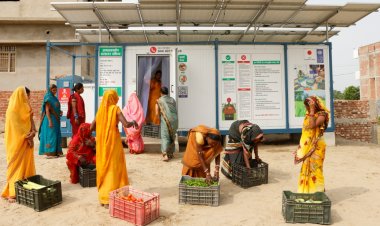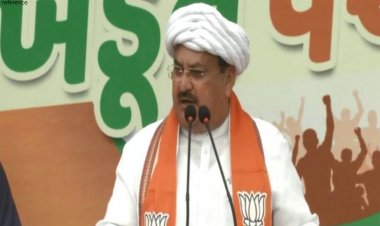Wheat export ban: Farmers suffer financial losses, and India a loss of face
India’s ban on wheat exports is a classic example of an administrative faux pas where a complex situation was created out of a simple problem by delayed decision making and lack of inter-departmental coordination. The government machinery failed to assess correctly the impact of declining production, cut in public procurement, and export data, leading to the utter confusion that led to the ban. This dimmed the prospects of better prices for wheat farmers and dented India’s image as a reliable exporter

India’s ban on wheat exports is a classic example of an administrative faux pas where a complex situation was created out of a simple problem by delayed decision making and lack of inter-departmental coordination. The government machinery failed to assess correctly the impact of declining production, cut in public procurement, and export data, leading to the utter confusion that led to the ban. This dimmed the prospects of better prices for wheat farmers and dented India’s image as a reliable exporter.
As per government estimates, India’s wheat output was set to touch a record 11.10 crore tonne and the public procurement target was 444 lakh tonne. Announcements were made on this basis that India would export record quantities of wheat to bridge the 25% supply shortage in the global market created by the Ukraine-Russia war. There were announcements that exporters will be given tax exemptions and subsidies, and that delegations are being sent to explore markets abroad.
Everything changed on May 13 evening. The government issued a notification banning wheat export. Did the announcement come as a surprise? I would say no. It was the culmination of a series of mis-steps taken on the basis of wrong inputs on the ground reality. Food Secretary Sudhanshu Pandey had recently said that the country has struck export deals for 40 lakh tonne of wheat for the current quarter, of which 10 lakh tonne has been executed. Last year, the country had exported more than 70 lakh tonne of wheat.
The government is working on an agriculture databank with the help of some major IT companies from across the world. State-of-the-art technology will be used to collect information related to agriculture and agricultural output. The databank will have information on everything right from soil quality to crop output, and farmers can take informed decisions based on these inputs.
When even ordinary farmers knew that there will be a massive decline in output due to an unusual rise in March temperature, the government was working on export prospects. The temperature in February-end and March is crucial for the wheat crop. High temperatures during this period will have a direct adverse effect on the output. It is surprising that the ministry of agriculture and the Indian Council of Agricultural Research (ICAR) overlooked this situation.
When the harvesting season started in Punjab, Haryana and western Uttar Pradesh, it was clear that there would be a 15-25% decline in production compared with last year. It made little sense for the government to stick to the public procurement target of 444 lakh tonne. The arrivals in the mandis were low and public procurement did not happen in several states for some time. The procurement got stuck at one-third of the target in Madhya Pradesh, a state that accounts for a large share in public procurement. It barely touched half of the target in Haryana, and two-thirds in Punjab.
The government waited till May before announcing that the production would fall short by 5.7% this year. A total of 10.96 crore tonne of wheat was produced last year and the initial target for this year was 11.1 crore tonne, which was later revised to 10.5 crore tonne. However, independent experts estimate that the production will be about 9.6 crore tonne only. The public procurement target has also been reduced from 444 lakh tonne to 195 lakh tonne which is a 13-year low.
The targeted public distribution system and the free distribution of 5 kg of food grain per person under the Pradhan Mantri Garib Kalyan Anna Yojana (PM-GKAY), the wheat stocks in the central pool dipped to a three-year low of 189 lakh tonne on April 1. Despite this, the food ministry made no additional effort towards public procurement. It appears that there was a lack of coordination between the agriculture ministry and the food ministry in this regard. When traders started buying wheat at prices above the minimum support price (MSP) of Rs 2,015 per quintal for the Rabi marketing season in early April, how did the government fail to see the reality on the basis of market intelligence?
The Madhya Pradesh government announced an exemption of market cess for wheat exports and the chief minister even fixed an export target. MP is the second largest contributor of wheat to the central pool after Punjab. Private companies and traders were buying wheat at Rs 2,100- 2,400 per quintal. The private sector has bought about 40 lakh tonne of wheat from the state. The prices were in the same range in UP too, and the private sector bought more than 6 lakh tonne of wheat in Punjab. Still, Punjab made the largest public procurement of 96.10 lakh tonne of wheat. The procurement got stuck at 41.89 lakh tonne in MP and at 40.64 lakh tonne in Haryana. It somehow managed to reach 2.47 lakh tonne in UP while Rajasthan, Gujarat, Uttarakhand, Himachal Pradesh and Jammu and Kashmir also contributed smaller amounts.
The public procurement should have been increased in such a situation by awarding the farmers a bonus of Rs 250 per quintal. It could have been done because most of the farmers got prices marginally higher than MSP. If some quantity of wheat is not procured by the government in the days to come, it will be for the first time that the remaining wheat stocks in the central pool will be higher than the fresh procurement. According to government figures, the total procurement of wheat has reached only 181.16 lakh tonne on May 19. So, the possibility of it reaching 195 lakh tonne is low. It is possible that some more farmers may sell their wheat at MSP under public procurement after the prices fall in the wake of the export ban.
If the farmers were worried about the quality of wheat, the government was also aware of it. But it took the government long, till the announcement of ban, to announce that farmers will be paid the full MSP even on procurement of shrivelled and broken grain up to the extent of 18%.
The government extended the PM-GKAY for another six months. This requires about 110 lakh tonne of wheat. Let us do some back of the envelope calculations. The wheat stocks in the central pool stood at 189.90 lakh tonne on April 1. Assuming that a similar amount is procured by the government, it will have a maximum of 380 lakh tonne. Now, 260 lakh tonne of wheat is required under TPDS and 220 lakh tonne for PM-GKAY a year. How will the central pool then manage to have 75 lakh tonne under the buffer norms on April 1. 2023? Sensing the seriousness of the situation, the food ministry has cut the quantity of wheat and increased that of rice under TPDS and PM-GKAY.
There was a steep increase in flour prices in the market which are disproportionate to the increase in wheat prices. The government attributed its decision to prohibit wheat exports to this price rise, but it is still keeping mum on the actual decline in production. Besides, we should also admit the fact that the production cost has gone up for the farmer this year because of a rise in diesel and fertilizer prices . The decline in wheat production has turned it into a double whammy for the farmers.
Given this situation, the decision to ban exports will hurt the farmers. The wheat prices have gone down by up to Rs 200 per quintal in most of the states after the ban to hover around the MSP. The prices of inferior-quality wheat have gone below MSP in several states. It is true that besides private traders and exporters, farmers have also not sold wheat in large quantities hoping for better prices. It is possible that some of them may sell their produce now. This may be gauged from the quantity of public procurement made after May 13.
The government that brought in farm laws two years ago to implement reforms in agriculture marketing has now made a U-turn in its policy direction. Farmers have been deprived of higher prices in line with the global demand. The ban has also brought to light the government’s faulty decision-making with regard to agricultural trade -- that too when enough wheat is available to meet the country’s domestic needs. This shows the government in poor light and doubts have been raised about the competence of officials. Perhaps, the government is exercising caution after the Reserve Bank of India increased the repo rate in view of the rising inflation. The government which was caught napping seems to be trying to display its agility now. Hope this will not cause further financial losses to farmers and a loss of face for the country.



 Join the RuralVoice whatsapp group
Join the RuralVoice whatsapp group









































